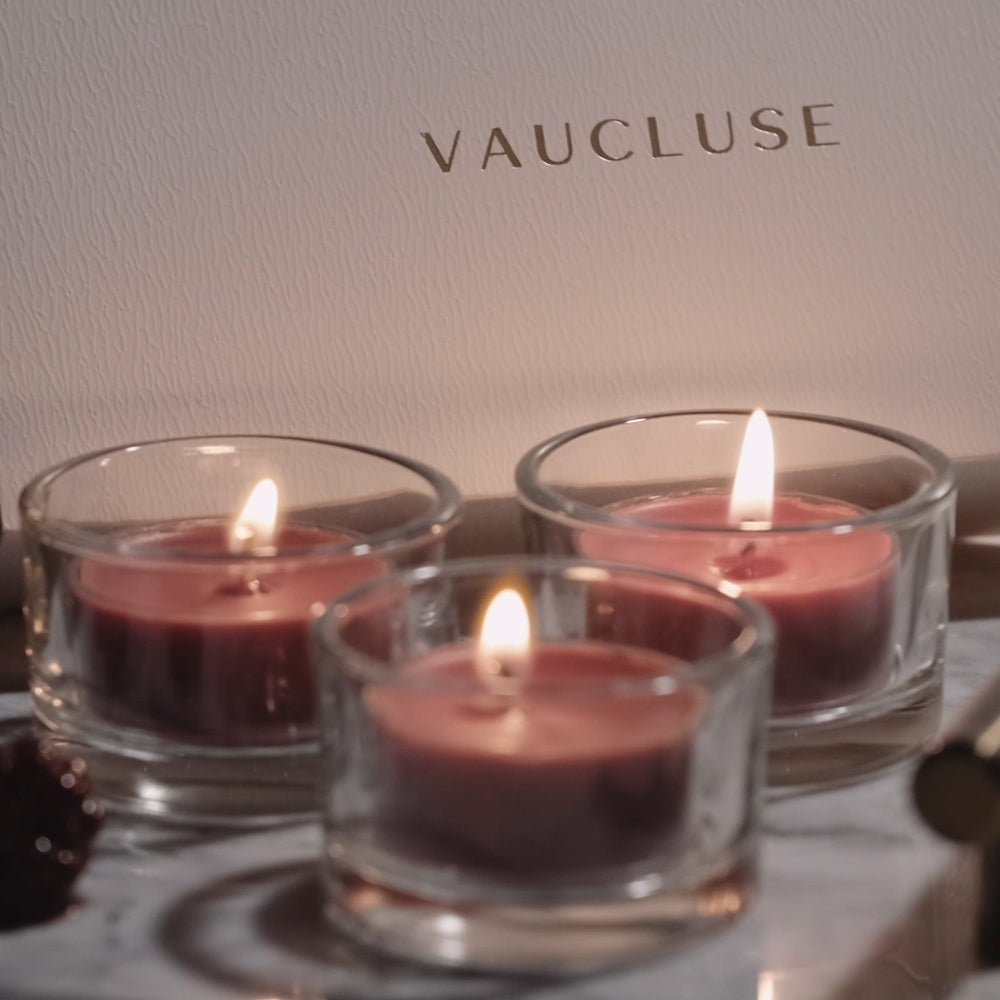From cozy evenings to elegant centerpieces, tea light candles have become a beloved source of warm, flickering light. But beyond their aesthetic charm lies an intriguing scientific process. How do these small candles sustain a flame? What makes them emit that soft, golden glow? In this blog post, we’ll explore the fascinating mechanics behind tea lights, from the chemistry of combustion to the physics of light emission. We’ll also examine how different factors, such as wax type and wick design, influence their burn efficiency.
The Anatomy of a Tea Light
A standard tea light candle consists of three main components:
- Wax Fuel – Usually made from paraffin, soy, or beeswax.
- Wick – A braided cotton or paper fiber that draws wax upward to fuel the flame.
- Metal or Plastic Container – Holds the wax and stabilizes the candle.
In scented tea light candles, fragrance oils are infused into the wax, releasing aroma as they melt.
The Combustion Process: How Tea Lights Burn
The burning of a tea light candle is a perfect example of a combustion reaction. Here’s a step-by-step breakdown of how it works:
1. Melting the Wax
When you light the wick, the heat melts the surrounding wax. The melted wax is then drawn up the wick through capillary action—a process where liquid moves through narrow spaces without external forces.
2. Vaporizing the Wax
As the liquid wax reaches the flame, it vaporizes into a gas. Only wax in its gaseous state burns—solid or liquid wax does not ignite directly.
3. The Combustion Reaction
The vaporized wax reacts with oxygen in the air, producing heat, light, water vapor, and carbon dioxide. This exothermic reaction sustains the flame as long as there’s enough wax and oxygen.
4. The Role of the Wick
The wick doesn’t burn away immediately because the melted wax cools it just enough to prevent rapid combustion. A properly sized wick ensures a clean, steady flame without excessive smoke.
Why Do Tea Light Candles Emit Light?
The light from tea lights comes from incandescence—the emission of light due to high temperature. Here’s how it happens:
- The flame heats tiny carbon particles (soot) to extremely high temperatures.
- These glowing particles emit visible light, creating the warm, yellow hue we associate with candlelight.
- Incomplete combustion (lack of oxygen) can cause flickering and soot production, which is why well-ventilated areas help tea light candles burn cleaner.
Factors Affecting Burn Time and Efficiency
Several factors influence how long and how well a tea light candle burns:
- Wax Type – Soy wax burns slower than paraffin.
- Wick Thickness – A thicker wick produces a larger flame but may burn faster.
- Container Material – Metal cups help retain heat, improving burn efficiency.
- Drafts – Airflow can cause uneven burning and soot.
The humble tea light candle is a marvel of simple yet precise science. From the capillary action that draws wax up the wick to the incandescent glow of heated carbon particles, every aspect of its function is rooted in chemistry and physics. Whether you prefer classic tea lights or fragrant scented tea light candles, understanding their inner workings adds a new layer of appreciation for these tiny flames. Next time you light one, take a moment to admire the delicate balance of heat, fuel, and oxygen that creates its comforting glow.



